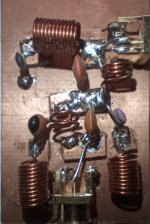kamilkamien
Member
Oh yes!Hello, the HPN-30118 is made here in Czech republic, you can buy it at DD-amtek for example. I have many such filters in my shack, all work as designed.
Try to contact them if they ship to Poland, I think this is much easier than bring it from US. The price is cca 23 USDe-Shop DD AmtekDDAMTEK HPN-30118
Dodavatel radiových a anténních systémů a jejich příslušenství, Měřicích přístrojů Autorizované zastoupení Kenwood, Yaesu, Ten-Tec, RigExpert, WiMo, Xiegu, SSB Electronic, Innovantennas, Optibeam aj.eshop.ddamtek.cz
when converted from CZK to USD.
They also sell HPN-30118-T with a parallel choke at the input side, that conducts static electricity from Discone type antennas.
They have plenty of other filters, preamps, attenuators, splitters, etc... for various bands:
e-Shop DD AmtekPředzes., filtry, preselektory, attenuátory
Dodavatel radiových a anténních systémů a jejich příslušenství, Měřicích přístrojů Autorizované zastoupení Kenwood, Yaesu, Ten-Tec, RigExpert, WiMo, Xiegu, SSB Electronic, Innovantennas, Optibeam aj.eshop.ddamtek.cz
This is probably what I'm looking for. I wrote a message to the seller. He has the entire range in his store! I almost ordered from the USA and now I have a faster alternative from a neighboring country. Thank you for your help!!!!!!


